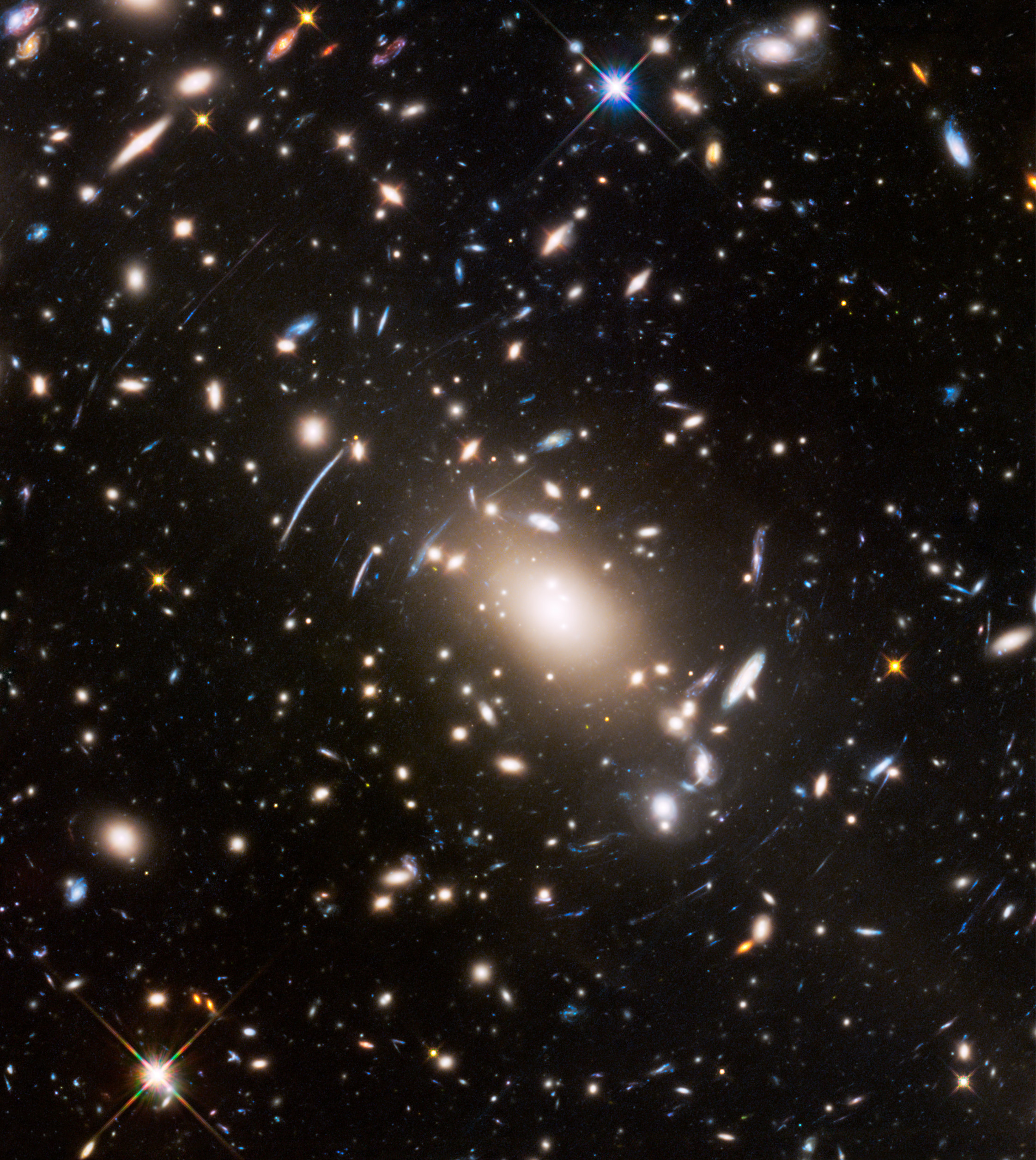Galaxies Take Wobbly Path Around Clusters, Surprising Scientists
Things are a bit wobblier out in space than researchers thought.
A deep-sky survey by the Hubble Space Telescope gathered observations of distant galaxy clusters, in which as many as thousands of individual galaxies orbit a common center. Among 10 of those clusters, researchers found that the very brightest galaxies wobbled in their movements around the cluster center, when they should have been steady.
This finding comes as a surprise because models suggest that these bright galaxies should have become steady over time, thanks to the gravitational influence of dark matter, according to a statement from the European Space Agency. Dark matter is the invisible stuff that makes up about 80 percent of the mass in the universe, but scientists don't know what it's made of. True to its name, dark matter does not radiate, absorb or block light and is therefore completely invisible; it can be detected, however, by its gravitational influence on structures like galaxy clusters.

Massive galaxy clusters are thought to form through a process of accumulation, such that smaller clusters can merge together in somewhat violent collisions. These clusters have dense cores that each contain what is known as the "brightest cluster galaxy" or BCG, which likely becomes extremely bright because it accumulates stars in those collisions.
The mergers can also cause the BCGs to wobble, but the predominant theory of dark matter predicts that "once a galaxy cluster has returned to a 'relaxed' state after experiencing the turbulence of a merging event, the BCG does not move from the cluster’s center. It is held in place by the enormous gravitational influence of dark matter," according to the statement.
But the researchers found that the BCG's continued to wobble after they should have stabilized.
"In other words, the centre of the visible parts of each galaxy cluster and the centre of the total mass of the cluster — including its dark matter halo — are offset, by as much as 40 000 light-years," officials said in the statement.
Get the Space.com Newsletter
Breaking space news, the latest updates on rocket launches, skywatching events and more!

So, what's causing the extended wobble? The researchers said they aren't sure, but they argued in the statement that if the observations are confirmed they could present a serious challenge to the dark matter theory.
A paper describing the results appears in the Proceedings of the Royal Astronomical Society journal, and the authors note that the Euclid spacecraft, which will map the distribution of dark matter in the universe, will be able to investigate the issue further. The European Space Agency is aiming to launch Euclid at the end of 2020.
Follow Calla Cofield @callacofield.Follow us @Spacedotcom, Facebook and Google+. Original article on Space.com.
Join our Space Forums to keep talking space on the latest missions, night sky and more! And if you have a news tip, correction or comment, let us know at: community@space.com.

Calla Cofield joined Space.com's crew in October 2014. She enjoys writing about black holes, exploding stars, ripples in space-time, science in comic books, and all the mysteries of the cosmos. Prior to joining Space.com Calla worked as a freelance writer, with her work appearing in APS News, Symmetry magazine, Scientific American, Nature News, Physics World, and others. From 2010 to 2014 she was a producer for The Physics Central Podcast. Previously, Calla worked at the American Museum of Natural History in New York City (hands down the best office building ever) and SLAC National Accelerator Laboratory in California. Calla studied physics at the University of Massachusetts, Amherst and is originally from Sandy, Utah. In 2018, Calla left Space.com to join NASA's Jet Propulsion Laboratory media team where she oversees astronomy, physics, exoplanets and the Cold Atom Lab mission. She has been underground at three of the largest particle accelerators in the world and would really like to know what the heck dark matter is. Contact Calla via: E-Mail – Twitter









